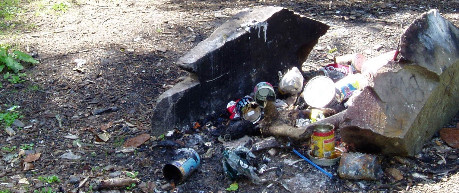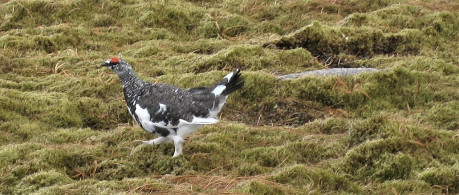Scotland has the best access to the countryside in the UK. With this comes a responsibility on all of us who explore it to care for the environment.
We try to tread lightly on the land, leaving it as we found it, but sometimes the impact of our actions is not immediately obvious, and the accumulation of many small effects can cause problems.
If you are passionate about caring for the mountain environment, follow our guidance on making choices that will minimise the impact you have while hill walking, climbing or ski-mountaineering.
Here are a few areas where we can all make a difference.
Litter in the mountains and their approaches is a problem and small scraps of plastic linger for decades - even fruit peel can take years to break down, especially at higher levels. Whether you are camping, walking, or climbing, only carry in things that you are willing to carry out.

There are few toilets in the mountains, but sometimes we still need to 'go'. Dealing with this in a hygienic and environmentally sensitive way is a vital outdoor skill.
Find out about the practicalities and the etiquette of pooing and peeing outdoors.
Wildlife can be the highlight of hillwalking and rock climbing, and you can help keep it that way. You should also be aware where you stand in relation to wildlife laws, as disturbing a wide range of plants and animals is illegal.

Sharing a day in the hills with your dog is a rewarding experience; walking and skiing across ridges, plateau and moorland. At all times on the hill, you are responsible for your dog’s actions and wellbeing - we've got lots of advice so you can have a safe and happy time with your dog.

Camping wild is a great way to experience Scotland's hills and glens. It has minimal impact when done responsibly. The Scottish Outdoor Access Code gives lots of advice on this vital skill, from where to locate your tent, to guidance on lighting fires.

We know that public transport is limited in many upland areas, and reliance on cars is often necessary for journeys. The volume of traffic at popular walking and climbing destinations can lead to pressure on rural roads and car parks, while adding to atmospheric pollution.
Here are some tips to help reduce that impact

Signs of human activity can range from archaeological remains, to ruined buildings, to cairns, walls and fences. Some are evidence of past life on the land, others are currently in use.
This section will help you make informed decisions about what you encounter and leave behind.
How you climb can affect how other climbers experience the crag. In addition, ledges are often home to plants and animals that have escaped from heavy grazing and disturbance, or because that is their specialist habitat. Follow these steps to ensure you minimise your impact when climbing or boulderin.

People are often creatures of habit, and most walkers follow popular linear routes through glens and along ridges, and on hill paths to crags and summits.
The impact of many boots over time can have a cumulative impact that is significant as vegetation is trampled, and bare soil turns to mud and may be washed away in the harsh upland climate.

Scotland is affected by variable weather conditions in winter, with incomplete snow cover and thawing ice often frustrating enjoyment. This presents a challenge to winter mountaineers and skiers alike, and means careful assessment of the conditions, both for your enjoyment and to protect the environment.
Find out more about treading carefully in winter.
